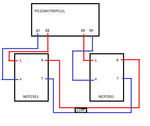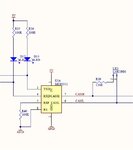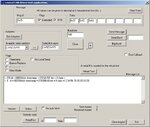Zong Zai
Newbie level 3
Hi,
Good morning every buddy.
I had try to touch about CAN communication for PIC32. I'm unfamiliar to CAN. Before this i had using rs232 , i2c and rs485 for communication, but now wan to use CAN. It is difference with i2c, for example i2c transmit data bu using the word Masterputs , masterwrite , slaveput , slaveget and receive, but for CAN case i didn't get the certain word to transmit or receive. So any buddy can help to explain for me??
Thank you!
Good morning every buddy.
I had try to touch about CAN communication for PIC32. I'm unfamiliar to CAN. Before this i had using rs232 , i2c and rs485 for communication, but now wan to use CAN. It is difference with i2c, for example i2c transmit data bu using the word Masterputs , masterwrite , slaveput , slaveget and receive, but for CAN case i didn't get the certain word to transmit or receive. So any buddy can help to explain for me??
Thank you!


